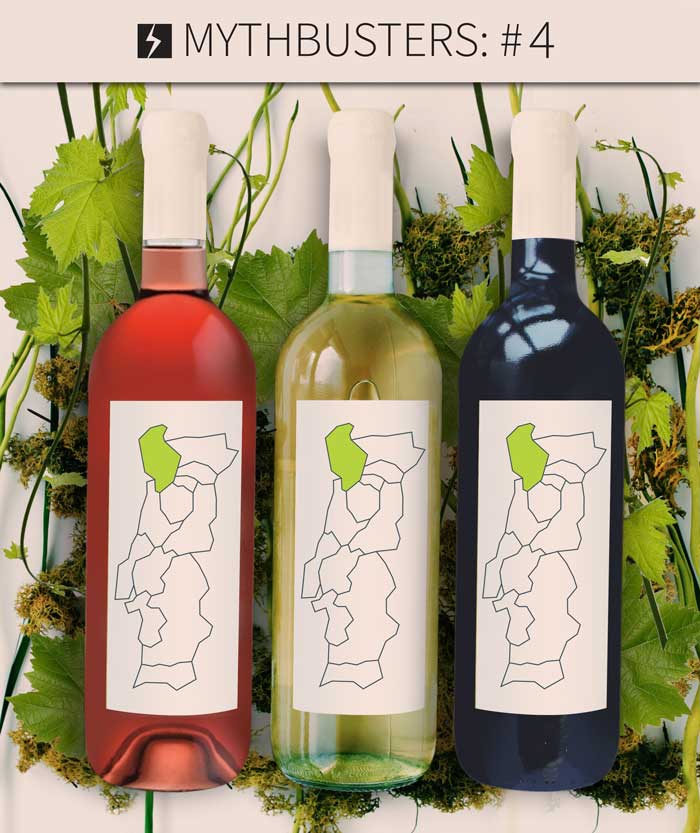
Because of the meaning of the word “verde” in Portuguese (which is literally “green” and means it is not matured), some people think Vinho Verde is a type of wine. This is really not te case, and it is not a type of wine nor is associated with a color or grape’s maturation degree. These are solely wines produced in the Vinho Verde Region (Northwest of Portugal) and exist in every color (white, rosé and red) and various types (sparkling, late harvests, table wines and fortified).
On the other hand, all of them are made from matured grapes, following similar winemaking methods as the rest of the world’s wines.
So, why is it called Vinho Verde?
Nowadays, its name comes solely from the region where it is produced. However, there are a few theories about its origin.
Some argue the name is due to the green fresh aspect of the vineyards of the Region. On the other hand, some (like Luis Lopes wrote in 2009 on Revista de Vinhos) have found more solid arguments, based on XX centuries’ laws, showing that in the old times, grapes were actually vinified less matured because of different reasons.
is it still the same nowadays?
No. The vinification of “not so mature” grapes happened in various regions. When the final result was a wine with alcoholic content between 8 and 11,5 (11,5 and 13 in case of Alvarinho single varieties), it would be considered “verde” by law, being it form Vinho Verde Region, Alentejo, Douro, or any other.
Nowadays, with the developments in technology and winemaking techniques, grapes reach its ideal point of maturation – in every region. For that reason, a Vinho Verde is just a wine produced in the Northwest of Portugal, in the Vinho Verde Region.

